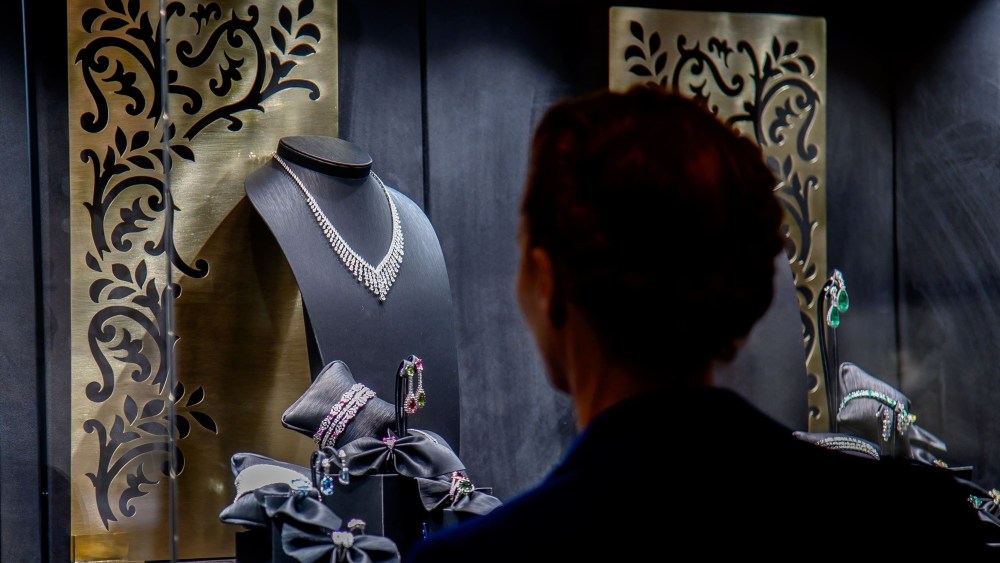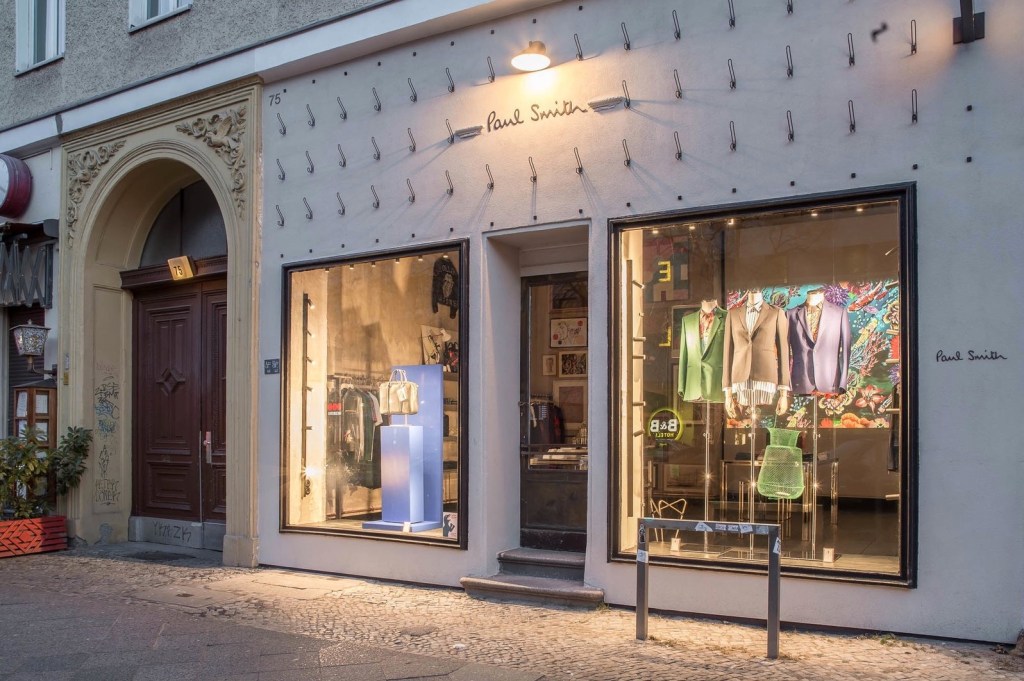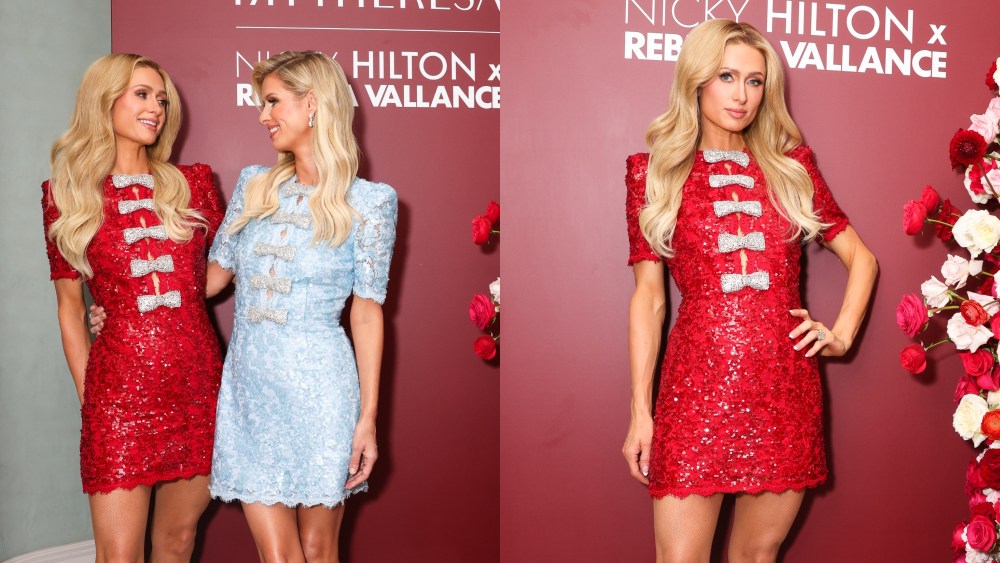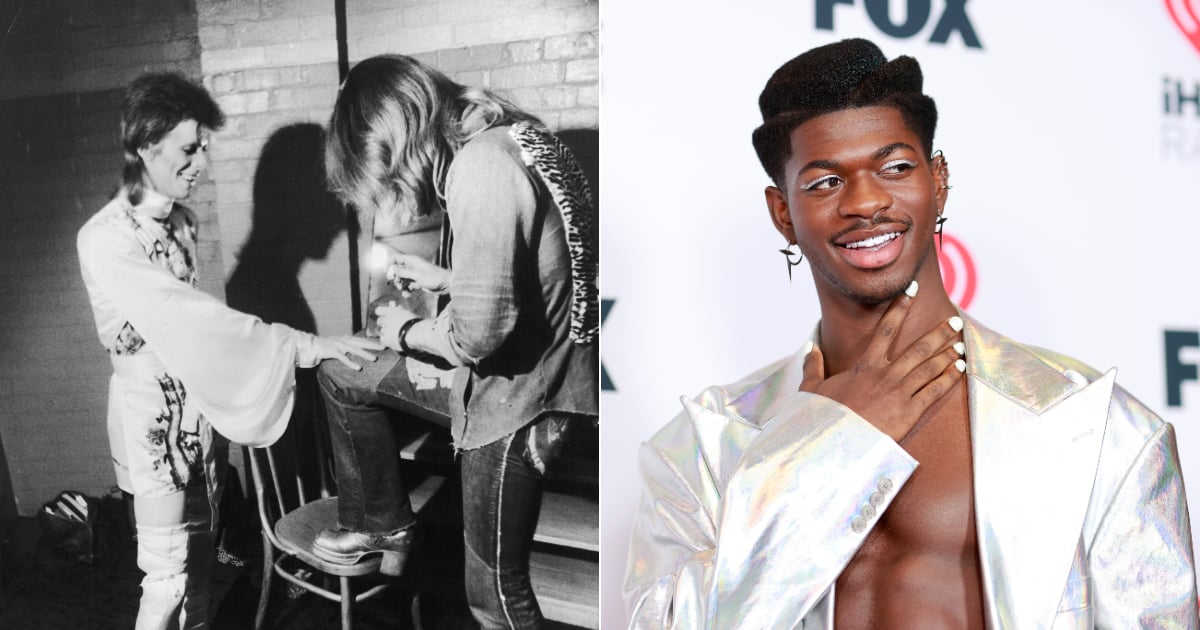VICENZA, Italy — Against a weak macroeconomic environment and waves of geopolitical instability, the question on the minds of many jewelers at the five-day VicenzaOro trade show here Tuesday was whether hard luxury can stay resilient.
There’s hardly a single answer, some executives among the 1,200 fair exhibitors opined, as the market’s volatility makes predictions harder and a cautious approach mandatory, even if jewelry has been historically viewed as an investment asset.
“Penchant for shopping is lacking a bit, there’s some contraction…but amid this complex moment for the market, I believe it is changing for the better, with renewed focus on what’s authentic and unique, which means artisanal,” said Gismondi 1754’s chief operating offering Stefano Rocca.
In the first half of the year, sales at Gismondi 1754 stood at 7.07 million euros, a 10 percent decline compared to the same period a year earlier. The Genoa, Italy-based jeweler managed to maintain its position, however, by enhancing its relationship with key accounts and clients, oftentimes developing tailor-made pieces, and expanding its footprint across regions.
You May Also Like
The latter move is one of two main strategies that companies have been implementing to offset dented consumer confidence and a general slowdown in sales, the other being product diversification.

According to data released by Confindustria Moda on behalf of the national jewelry association Federorafi, exports of Italian jewelry increased a 59.2 percent in the January to May period this year to 6.93 billion euros, driven by Turkey, the U.S. and U.A.E.
Yet Italian jewelers were less buoyant than in the past few years, when so-called “revenge spending” fueled their top and bottom lines, providing an even harder basis of comparison in 2024.
As a sense of uncertainty loomed over the fair, VicenzaOro has worked “to ensure the best representation of Italian and international jewelry districts and the best of jewelry manufacturing,” said Matteo Farsura, global exhibition manager of the jewelry and fashion division of IEG, or Italian Exhibition Group, the show organizer.
The fair did not disclose the exact number of visitors but said that international ones hailing from 132 countries accounted for about 50 percent of the total. In particular, buyers from Europe represented more than 63 percent, while Asian and Middle Eastern attendees increased to 21 percent, versus 17 percent in September 2023.
Sales at Roberto Coin in the first half were flat compared to the same period in 2023 but the company believes it has bulletproofed its business by stretching its assortment to different price positions, including more accessible options.
“Clients are more updated than ever, they know where to buy and where to find novelty, they are very much aware and deserve respect,” the namesake entrepreneur said.
“We decided to safeguard our competitiveness by giving up on a portion of our profits,” Coin said, noting how prices were only raised only slightly. “Our clients have acknowledged and appreciated this, which gives us further credibility for the future. We want the company to have a future, rather than generate immediate profits,” he said.

Despite the complex scenario, the jeweler didn’t skimp on investments and has recently expanded its manufacturing capacity at its premises in Italy and Thailand.
Among the exhibitors with the strongest brand awareness in the jewelry sector, Roberto Coin is looking at strengthening its footprint in Europe, especially Italy, Germany, France and Switzerland, followed by a focus on Asia, where the brand is currently distributed in Malaysia, the Philippines, Hong Kong, Japan and Australia, among other countries.
Similarly, Gismondi 1754 has been busy building its presence in the Far East, as part of its worldwide retail and wholesale distribution expansion plan.
In the first half of 2024 it inked a multiyear deal with Hong Kong’s Ippo Group Ltd. to expand its presence in the region, with a first store in Tokyo to open by the end of the summer and more units to bow in Macau by the end of 2024 and Cambodia in 2025. This comes on the heels of a similar deal struck last year in the Gulf Cooperation Council area with Qatar’s Al Mana family.
Although Europe remains Giorgio Visconti’s largest market, with Spain, Belgium, Germany and the region’s northern countries proving resilient against the dampened macroeconomic landscape, the brand plans to pour more investments into China. “Over the long time we expect a great interest [in the brand] surging from a wealthy clientele that is consolidating over there,” chief executive officer Andrea Visconti said.
He believes the appetite for hard luxury goods hasn’t slumped that much.
“The purchase of our jewels — defined by elements such as gold, diamonds, sapphires, rubies and emeralds as well as timeless classicism in design — is a form of investment that clearly has an appeal on jewelry customers,” he said. The Italian company’s year-to-date revenues are in line with 2022 and 2023.

Jewelry as an investment is especially true for the American market, where brands continue to invest.
A regular at the Couture jewelry show in Las Vegas and a frequent winner of its awards, Gismondi 1754 has taken its American operations in-house by opening a local subsidiary in the first half of the year — “a non-painless move,” Rocca said. “Things are doing so great in the U.S. that it was counterintuitive to maintain a distributor,” the company’s COO said.
As a testament to its brisk business in the market, Gismondi 1754 has opened a shop-in-shop at Saks and has seen Neiman Marcus strengthen its relationship with the brand.
The region has proven a boon for smaller players, which overall face more pressure to fight for market share against bigger, marketing-fueled competitors.
The 10-year-old Peruffo jewelry brand has managed to penetrate the U.S. in the past few years, striking deals with Neiman Marcus and other specialty boutiques throughout America. It currently represents its biggest market, said CEO Enrico Peruffo.
After attending the Couture show in Las Vegas for the first time last year, the brand born as a white label project out of the Fratelli Bovo third-party jeweler based in Vicenza, Italy, the company has stepped up distribution, looking to Greece, Spain and Germany.

In order to offset the continued increase in the cost of gold and precious metals, jewelers have been more heavily relying on precious and semiprecious stones, which ruled the show, oftentimes in contrasting combinations.
Cue Giorgio Visconti, which unveiled the second chapter of the Like Me line introduced earlier this year and intended for self-gifting. Slightly pricier and more design-driven than the previous launch — the Io Luce range — the lineup was expanded to include statement rings in white or rose gold enriched with diamond pavés and pops of color thanks to pink tourmalines and blue tanzanite or pink sapphires.
“We don’t consider pricing strategy [when introducing new collections] but rather our clients’ needs and their emotions,” the company’s CEO said.
At Roberto Coin, the signature Venetian Princess collection was updated for two pendant necklaces crafted from yellow gold, chrysoprase, mother-of-pearl and rhodonite featuring a hidden mechanism that allows the flower-shaped charm to spin.
Damiani also reinvented come of its hero designs, including the Notte di San Lorenzo spiraling rings which for the first time featured colored gemstones such as emeralds, rubies and sapphires to flank diamonds. The Belle Époque bangles and rings expanded to full pavé iterations, while at brother brand Salvini, the Bagliori collection added a new hexagonal shape for rings and pendant necklaces in white gold dotted in diamonds.

A certain penchant for geometric and graphic designs imbued with a more contemporary appeal continued to rule the fair, with Roberto Coin, for example, unveiling a standout gold chain-like necklace embellished with black ceramic enamel links and diamond pavé.
At the Capri, Italy-based Chantecler — which this year is celebrating the 80th anniversary of its signature bell-shaped charm and unveiled more iterations — a focus on 18-karat gold and diamonds was paramount in the Oro di Capri range, the brand’s theme for 2025.
Articulated over the signature Paillettes and Logo lineups, the former included delicate rings and earrings in rose gold with black and white diamond pavé, while the latter, centered on the jeweler’s ‘80s logo recalling a seal, combined yellow gold and black resin edging its frame for pendant earrings, charms and rings with a central diamond pavé.

Gismondi 1754 introduced rose gold and diamond pavé pendant earrings of interlocking snap-hooks in its Vela lineup and displayed the Fenice necklace, which won the company the Couture Design Award in Las Vegas.
An impressive design inspired by the mythological phoenix, the necklace featured a central 5.05-carat pear-shaped diamond held together by two strings of round- and pear-shaped diamonds from which 38 additional strings of diamonds protrude toward the chest as if they were the phoenix’s feathers.
Peruffo’s design-driven ethos fueled by creative director Marta Martino’s punk attitude resulted in a new 9-carat capsule collection inspired by piercings, presented in two different iterations, called Loop and Drops. The former combined the signature piercing with a pyramidal tip to a chain with a final plectrum-shaped charm, while the latter included sinuous earrings and rings in the shape of liquid-looking drops of gold.



